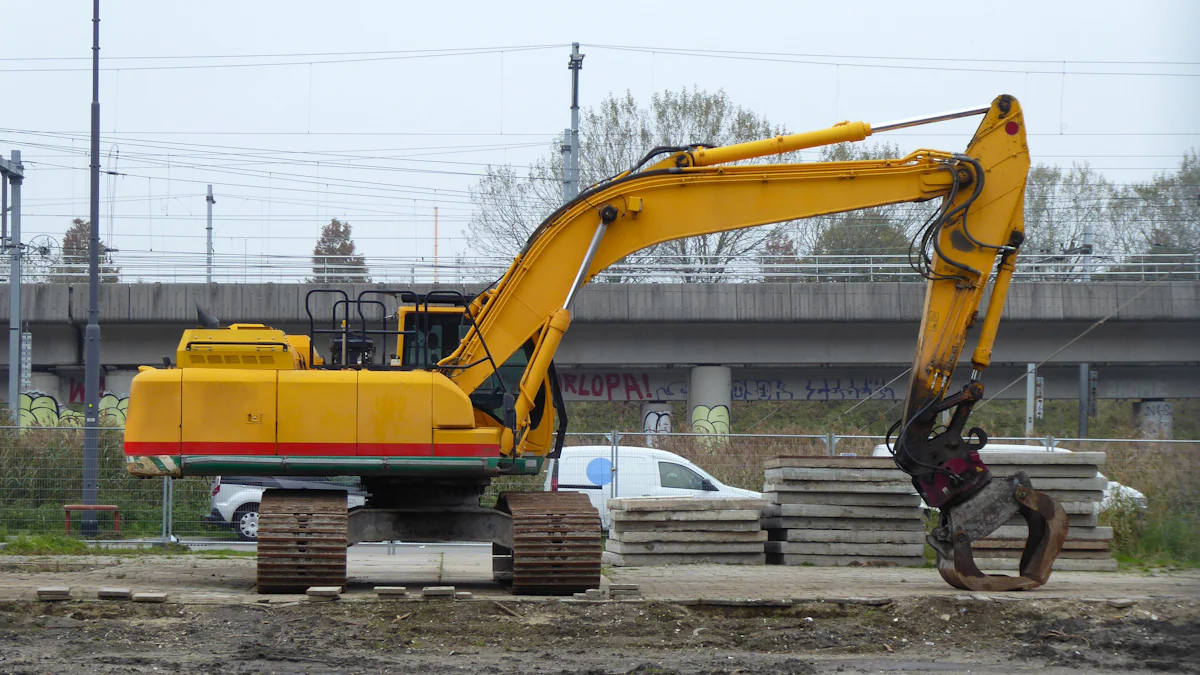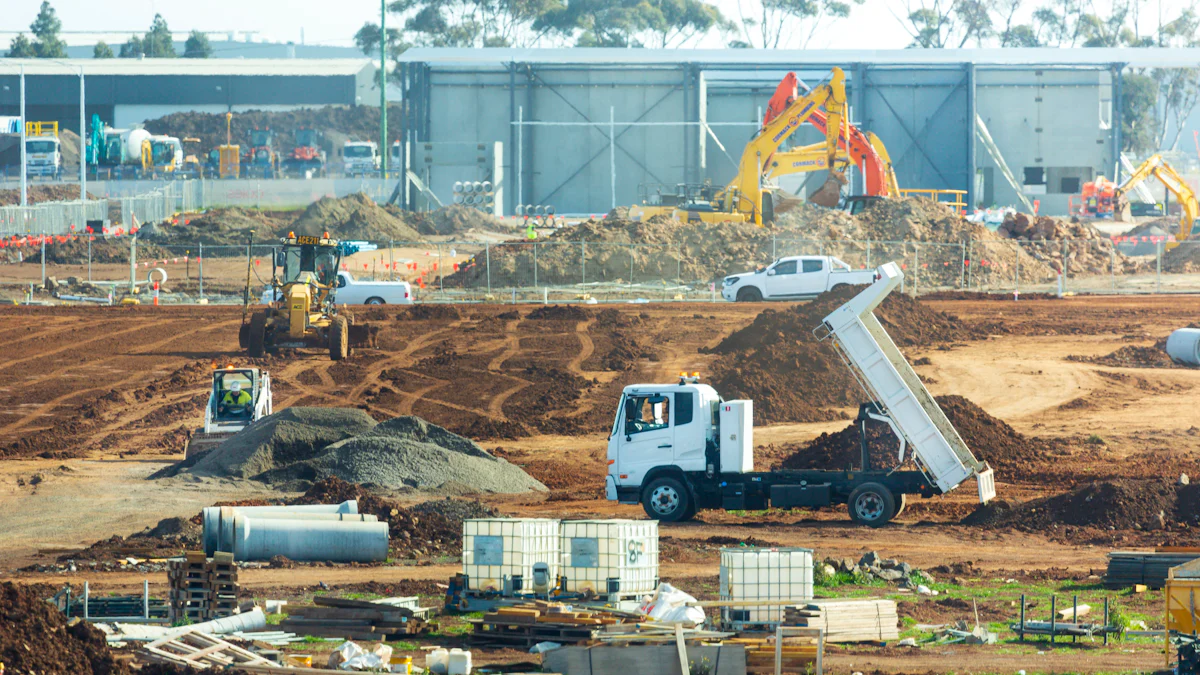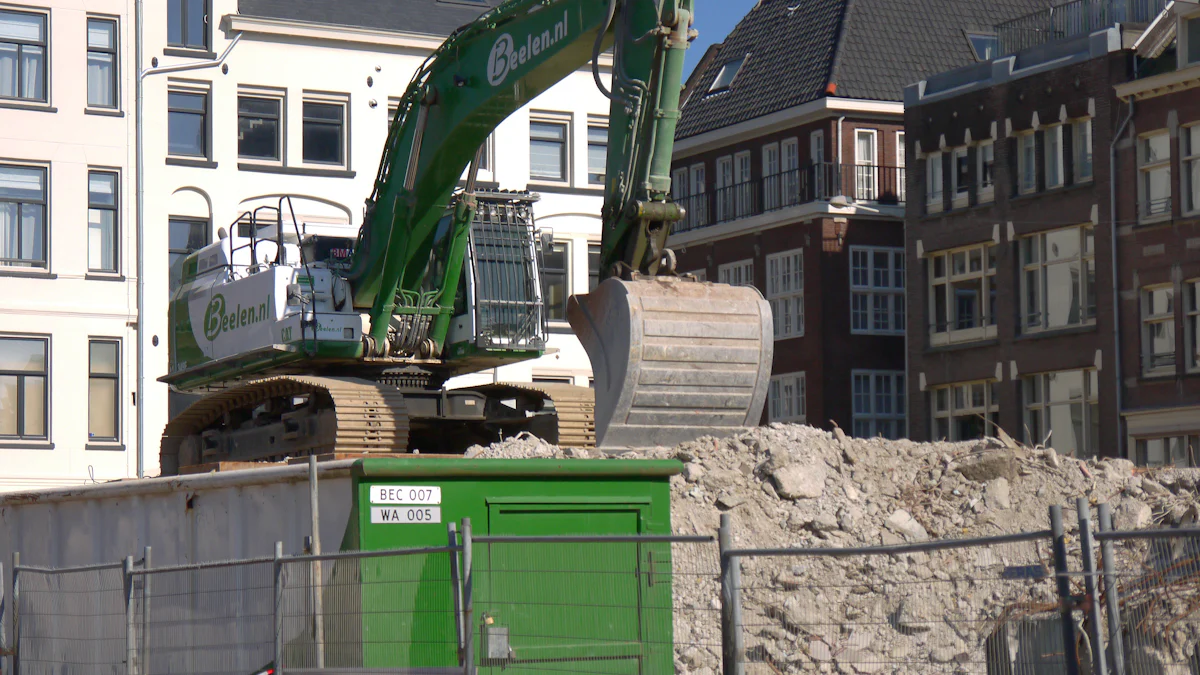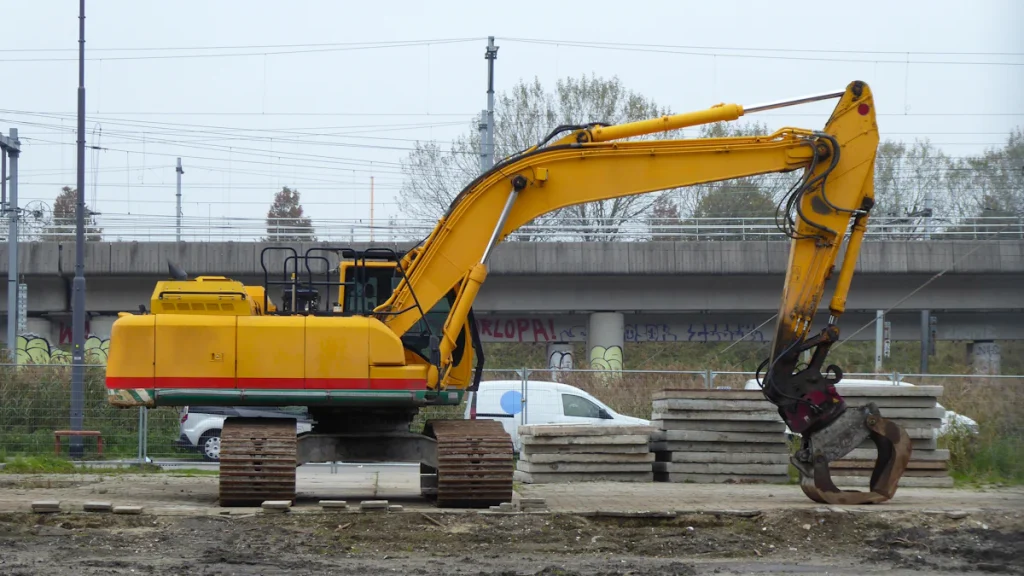
When you choose an excavator boom, understanding the differences between standard and long reach options is crucial. The standard boom offers a balanced design for general tasks, while the long reach boom extends your capabilities for specialized operations. Long reach booms enhance functionality by providing extended reach for light digging tasks. With a super long reach excavator, it allows you to access areas that are otherwise hard to reach. For reliable excavator parts, consider YNF Machinery, a trusted partner in the industry.
Key Takeaways
Understand the differences: Standard booms are versatile for general tasks, while long reach booms excel in specialized operations requiring extended reach.
Choose based on project needs: For tasks needing access to hard-to-reach areas, opt for long reach excavators; for general construction, standard excavators are ideal.
Maximize efficiency: Long reach excavators enhance operational efficiency in projects like dredging and demolition by allowing safe, precise work from a distance.
Consider cost-effectiveness: Standard excavators typically have lower initial costs and are widely available, making them a practical choice for many contractors.
Evaluate stability: While long reach excavators offer extended capabilities, they may lack the stability of standard models when fully extended.
Prioritize safety: Long reach excavators allow for safer operations in challenging environments, reducing the need for repositioning and enhancing overall project safety.
Trust reliable partners: For quality excavator parts and components, consider YNF Machinery, ensuring your equipment remains operational and efficient.
Standard Excavator Booms

Definition and Description
Standard excavator booms are essential components of an excavator, providing the necessary reach and depth for various tasks. These booms are typically made from high-strength steel, ensuring durability and reliability during heavy excavation work. The excavator boom plays a crucial role in controlling the horizontal and vertical movements of attachments, allowing you to dig, scoop, and move materials efficiently.
Characteristics of Standard Excavator Booms
Standard excavator booms are designed with a balanced structure, offering a moderate reach that suits general construction tasks. They provide a stable platform for the hydraulic system, which powers the boom’s movements. This design ensures that you can perform tasks with precision and control, making it ideal for a wide range of applications.
Typical Design Features
The typical design features of standard excavator booms include a robust frame and a straightforward mechanism for raising and lowering the arm. These booms are engineered to withstand the rigors of construction sites, providing reliable performance in various conditions. The hydraulic components are integrated seamlessly, allowing for smooth operation and efficient power transfer.
Applications
Standard excavators are versatile machines used in numerous construction scenarios. Their balanced design makes them suitable for tasks that require moderate reach and depth.
Common Uses in Construction
In construction, standard excavators excel in tasks such as digging foundations, trenching, and material handling. Their reach capabilities allow you to perform these tasks efficiently, ensuring that projects progress smoothly. The excavator boom provides the necessary leverage to lift and move heavy materials, making it an indispensable tool on any construction site.
Scenarios Where Standard Excavator Booms Excel
Standard excavator booms are particularly effective in scenarios where precision and control are paramount. They are ideal for tasks that require careful maneuvering, such as working in confined spaces or near existing structures. The excavator reach offered by these booms ensures that you can complete tasks without compromising safety or efficiency.
Advantages
Standard excavators offer several advantages that make them a popular choice for construction professionals.
Versatility in Various Tasks
One of the key advantages of standard excavators is their versatility. You can use them for a wide range of tasks, from digging and grading to lifting and loading. The extended boom and arm configuration allows you to adapt to different project requirements, ensuring that you have the right tool for the job.
Cost-Effectiveness and Availability
Standard excavators are widely available and offer a cost-effective solution for construction projects. Their straightforward design and reliable performance make them a practical choice for contractors looking to maximize their investment. The availability of parts and hydraulic components ensures that maintenance and repairs are manageable, keeping your equipment operational and efficient.
Long Reach Excavator Booms

Definition and Description
Long reach excavators are specialized machines designed to extend your capabilities in challenging environments. These excavators feature an extended boom and arm, allowing you to reach areas that standard excavators cannot access. The excavator boom plays a crucial role in providing the necessary reach and depth for various tasks. With a working range of up to 100 feet, long reach excavators are ideal for projects requiring significant reach.
Unique Features of Long Reach Excavators
Long reach excavators stand out due to their unique features. They come equipped with an extended boom and arm, which enhances their reach capabilities. This design allows you to perform tasks such as high-reach demolition, marine dredging, and embankment construction with ease. The hydraulic system in these excavators ensures smooth operation, providing you with precise control over the boom’s movements.
Design Aspects for Extended Reach
The design of long reach excavators focuses on maximizing reach while maintaining stability. The extended boom and arm configuration allows you to work at a safe distance, enhancing safety and accuracy in tasks. These excavators often have downsized buckets and linkage groups, making them suitable for light digging operations like cleaning irrigation canals and draining ditches.
Applications
Long reach excavators excel in specialized tasks and environments where standard excavators fall short. Their extended reach makes them indispensable for projects that require precision and safety.
Specialized Tasks and Environments
You can rely on long reach excavators for tasks that demand extended reach and accuracy. They are perfect for high-reach demolition, where working from a safe distance is crucial. These excavators also shine in marine dredging and erosion control, allowing you to access hard-to-reach areas without repositioning the machine.
Ideal Scenarios for Long Reach Excavators
Long reach excavators are ideal for scenarios where maximum digging depth and reach are essential. They perform exceptionally well in challenging environments, such as tight excavation sites or areas with obstacles. Their ability to extend the reach of your excavator makes them a valuable asset in projects that require precision and efficiency.
Advantages
Long reach excavators offer several advantages that make them a preferred choice for specialized tasks.
Extended Reach Capabilities
One of the primary advantages of long reach excavators is their extended reach capabilities. This feature allows you to access areas that are otherwise difficult to reach, enhancing your operational efficiency. The extended boom and arm configuration provides you with the flexibility to tackle a wide range of tasks with ease.
Specialized Performance in Specific Tasks
Long reach excavators deliver specialized performance in tasks that require precision and accuracy. Their design allows you to perform tasks such as deep excavation and demolition from a safe distance, ensuring safety and efficiency. The hydraulic system in these excavators provides you with the control needed to execute tasks with precision.
Comparative Analysis
When choosing between a standard and a long reach excavator, understanding their performance in different scenarios is crucial. Each type offers unique strengths and weaknesses that can impact your project’s success.
Performance Comparison
Evaluating Efficiency in Different Scenarios
You will find that long reach excavators excel in tasks requiring significant reach capabilities. Their extended boom and arm allow you to access areas that standard excavators cannot. This feature proves invaluable in projects like dredging or demolition, where maximum digging depth is essential. The hydraulic system in long reach excavators ensures smooth operation, providing the power needed for tasks at extended distances.
In contrast, standard excavators offer versatility across various tasks. They perform well in general construction scenarios, providing a balanced reach that suits most projects. Their design allows for efficient material handling and precise digging, making them ideal for tasks that require maneuverability and control.
Strengths and Weaknesses of Each Type
Long Reach Excavators:
Strengths: Extended reach capabilities, ideal for specialized tasks, enhanced safety by operating from a distance.
Weaknesses: May lack the stability of standard models when fully extended, potentially higher initial investment.
Standard Excavators:
Strengths: Versatile, cost-effective, stable for general tasks.
Weaknesses: Limited reach compared to long reach models, less effective in specialized environments.
Cost Considerations
Initial Investment and Maintenance Costs
Long reach excavators often require a higher initial investment due to their specialized design. The extended boom and arm configuration, along with advanced hydraulic systems, contribute to this cost. However, their ability to perform tasks that standard models cannot may justify the expense.
Standard excavators typically have lower initial costs. Their widespread availability and straightforward design make them a practical choice for many contractors. Maintenance costs for standard models are generally manageable, thanks to the availability of parts and simpler hydraulic systems.
Long-Term Financial Implications
Over time, the financial implications of your choice depend on project requirements. Long reach excavators can offer significant returns on investment for projects needing extended reach. Their ability to complete tasks efficiently can reduce project timelines and labor costs.
Standard excavators provide long-term value through their versatility. They adapt to various tasks, ensuring you have the right tool for multiple projects. This adaptability can lead to cost savings by minimizing the need for additional equipment.
Decision-Making Factors
Project Needs and Requirements
Your project’s specific needs should guide your decision. If your tasks involve reaching distant or hard-to-access areas, a long reach excavator is the right choice. Its extended reach capabilities ensure you can tackle specialized tasks with ease.
For projects requiring versatility and cost-effectiveness, standard excavators are ideal. Their balanced design suits a wide range of applications, making them a reliable choice for general construction tasks.
Environmental and Task-Specific Considerations
Consider the environment and specific tasks when choosing an excavator. Long reach excavators excel in challenging environments, such as tight spaces or areas with obstacles. Their ability to operate from a safe distance enhances safety and efficiency.
Standard excavators perform well in typical construction settings. Their stability and control make them suitable for tasks requiring precision and maneuverability.
In summary, choosing between standard and long reach excavator booms depends on your project needs. Standard booms offer versatility and cost-effectiveness for general tasks. Long reach booms provide extended reach for specialized operations, enhancing safety and efficiency. Consider the specific requirements of your project to make an informed decision. For reliable excavator parts, trust YNF Machinery. With over 35 years of experience, they offer high-quality hydraulic components and more, ensuring your equipment performs optimally.





